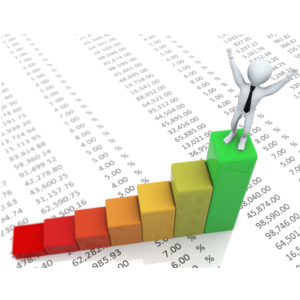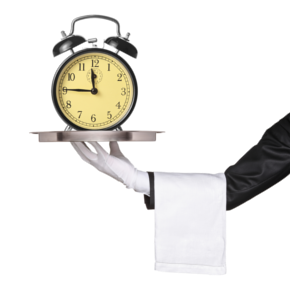
In a recent survey from www.restaurantowner.com, respondents were asked about their satisfaction with their POS systems. One of the surprising numbers in the survey was related to reporting, where out of over 1,300 respondents, more than half said that they did at least some of their reporting on spreadsheets rather than use their POS system.
Why is this, when the average restaurant owner, based on the same survey, spends between $12,500 and $15,000 on their POS system?
As we have frequently suggested in this series of articles, the most key element of any POS purchasing decision is you, the owner, being aware of the services you wish the POS system to provide. Whether it’s the automation of kitchen printing or the speed and security of credit card information being transacted over high speed internet, it’s important for you to understand the gains you intend to achieve with the purchase and implementation of the system. Likewise, you have to be exceedingly familiar with the kinds of information being reported in your restaurant and the manner in which you prefer this data to be displayed. Many owners prefer the “20,000-foot view” of their operations, where they look at total sales and expenditures and ignore some of the more micro-level reporting. If you are this type of owner, find the person who spends the most time with the shift, employee and end-of-day reporting and use their knowledge to inform your decision on your purchase. With the number of reporting features available in most POS packages, how the system is communicating information back to you and how it organizes this information can be one of the biggest boons or frustrations regarding your new POS system.
As always, we’ll be using POSitouch to serve as our example for specifics. Most reporting in POSitouch is done through back-of-house (BOH) operations on a computer dedicated to running POSitouch. There are other configurations that are available, but we’ll be assuming a dedicated “Order Entry” machine, which will run the main executable and serve as the pc which is used to make menu changes, run credit cards, etc. From this machine, we can run and print/save/email the POSiReport, a one-sheet look at the day’s activity. This is usually run at the end of the day, but may be run anytime. This report will give us a look at our sales by category, by shift, discounts applied and organized by type, a brief labor summary, a summary of paid-ins and paid-outs and, finally, a reconciliation portion which breaks down our expected deposit by pay type, including individual entries for credit card types. This report was designed and is usually effective in providing a comprehensive summary in the day’s financial activities.
Other reports, such as the Sales Journal Report, provide similar information, but broken down by sales category and revenue centers. Also, tax is further broken down. Where the POSiReport is one page, the Sales Journal report can be ten or more pages, presenting the same information in a more detailed way. Another report that we find useful is the Item Sales Trend Report, which can be run for a day, week, month or an arbitrarily chosen date range. This report will display a list of all items sold in the specified range, including their total sales for this range. This is a good report to monitor which items on your menu are selling, in what quantity, and the income earned on those items. You may find some items simply do not sell, and may be replaced by other items, or simply identify an opportunity to place a special on a given item to reduce inventory. How you use the report may vary, but the information is always at your fingertips.

You may also find benefit in the use of a report like the “Server Productivity Report,” which lists server sales on specific items, configured by you. This report is advantageous for those businesses which use item sales to hold contests for servers, or to otherwise reward sales of certain menu items.
Front-of-the-house (FOH) reporting is generally expected to be done on the fly, for a manager to see quickly what the day’s sales are in order to gauge labor needs, or simply to satisfy curiosity on those busy days. With POSitouch, the use of “Cashout Reports” will display onscreen summaries of sales for the whole house, or individual servers. You may further refine your onscreen reporting to display category sales and the like. If you prefer more tangible reporting, the same reports displayed onscreen may be printed at any check printer. Much of this reporting was covered in our discussion of closing procedures for fast food and table service environments.
As clever as the reporting may be, you may have a very specific method of organizing your sales information. The reason for the high rate of users who do not completely lean on the POS-native reporting may stem from two cases. In one, the restaurateur did not make clear the reporting needs of the business and purchased a system that reports the general information they need, but not in a manner that the staff is familiar with. In this case, you can eliminate the spreadsheet-style reporting by adapting to the new offerings provided by the system. For those more resistant to change, you may find yourself simply manually exporting the information provided by the POS system into the old spreadsheets, which makes no net gain in productivity. Alternately, some sites require information included that is not generally considered integral by the programmers who designed the reporting. For example, you may wish to include data from server sales alongside labor. While POSitouch does offer a report that does this, it does not do it on its one-sheet POSiReport. Or perhaps you want to see inventory transactions on the same page as your item sales. Again, this information may be found separately very easily, but not on a single report together.
So many business owners find that their purchase of a new POS system leads to unwelcome surprises, such as limitations or unexpected exclusions in reporting. Just because you look at certain information in a particular way does not mean your POS system shares the same view of what is and what is not important data. Speak with your salesperson or technical representative to determine which POS system offers the reporting solution you desire, as well as the ordering and operational solutions. And if you currently own a POS system that does not fulfill your reporting needs, identify those areas where the native reporting fails you and discuss potential solutions with your dealer. With a little pre-planning and persistence, we can bid adieu to those spreadsheets forever and automate one more labor- (and money-!) intensive step in your business.
